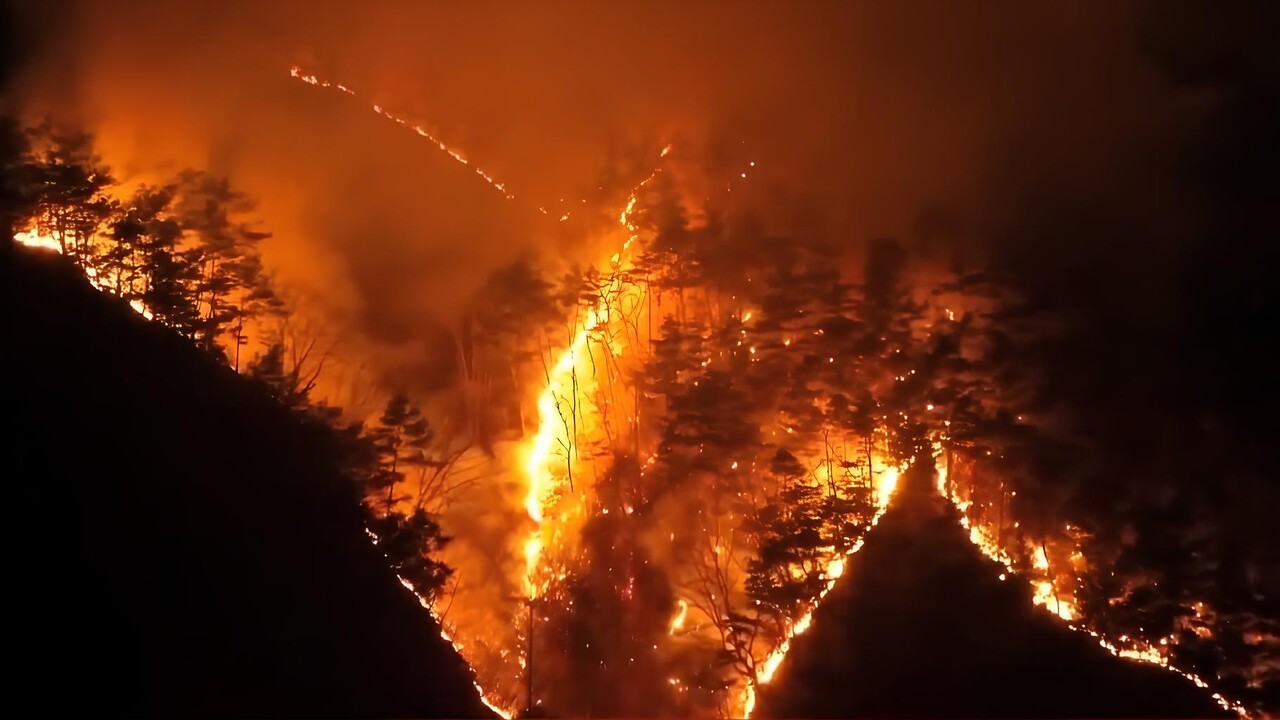
With wildfires spreading across the southern region of Korea in the last weeks of March, the Korea Forest Service (KFS) issued a level-three alert, the highest wildfire response level, in Gyeongsang Province. This particular wildfire was suspected to have been started on March 22nd by a man clearing his family’s gravesite at the summit of Gosan Mountain in Uiseong County, where a lighter was found. The wildfires Korea later spread to four nearby cities due to high winds reaching speeds of 27m/s, causing extensive damage to forests and residential areas around Gyeongsang Province. Uiseong County and Andong City were among the most affected, with approximately 48,238ha impacted and more than 3,000 houses, factories, and cultural heritage sites damaged. The KFS deployed 420 helicopters and more than 10,000 firefighters, police, and civil servants in total to fight the fires. Despite mass efforts, 31 people died and 51 required medical attention, as reported by the KFS on April 6th. Over 30,000 people affected by the fires stayed in temporary shelters such as indoor gyms and community centers. After 213 hours since it broke out, the major wildfire was extinguished around April 28th, and the last remnant of the fire on the outskirts of Jirisan Mountain was finally extinguished on the 30th. The government and local autonomous entities are working on emergency relief plans and disaster recovery, compensating the victims with disaster relief funds that have been collected.
